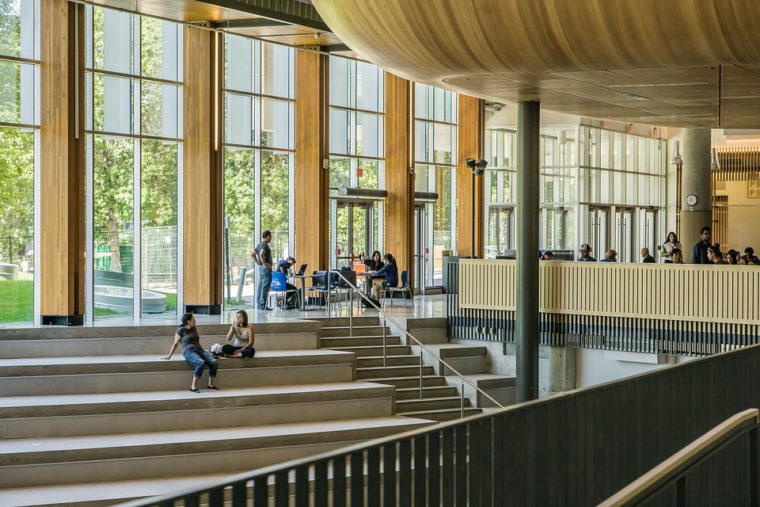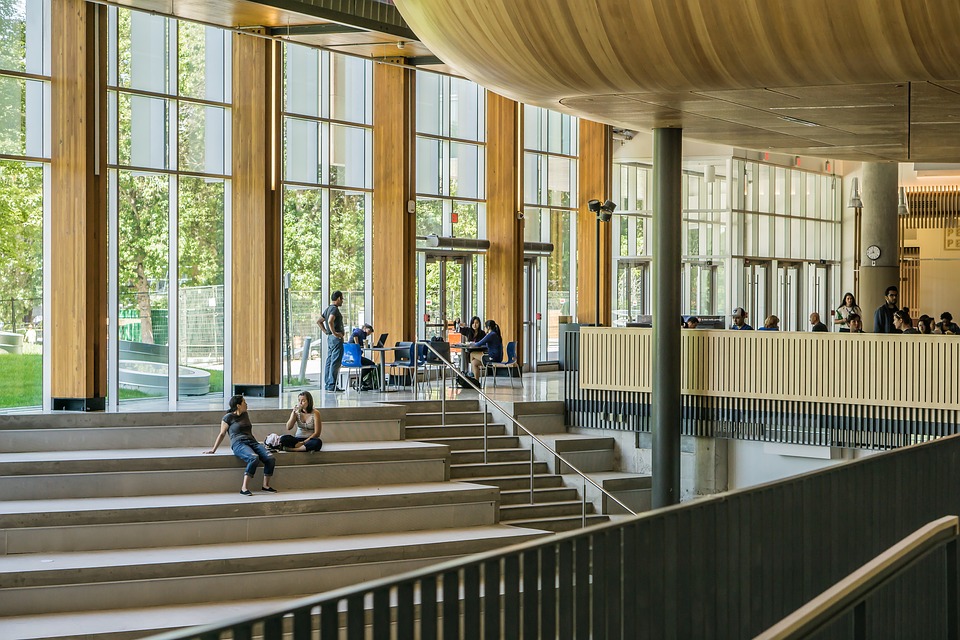
At a time when every country is worrying about unemployment, colleges and universities throughout the U.S. are aggressively planning and launching initiatives designed to prepare students for jobs that will be in high demand in the coming decades.
Education officials are upgrading, launching new construction, and redesigning curriculum to stay competitive with recruiting efforts. There will be no shortage of upcoming opportunities in this sector in the coming months. Educational leaders are seeking ways to improve housing, food services, campus conveniences, safety, and new courses.
 New York
New York
Community colleges in particular are in high demand when the economy is suffering or when unemployment is rising.
Hudson Valley Community College (HVCC) in New York is designing programs, classes, and curriculum that will be of high interest 10 years from now. The college hopes to implement micro-credential and apprenticeship programs that can be completed in only a few months. HVCC’s new facility master plan is under development, and one of its major projects will be a three-story training hub which will cost approximately $70 million. Other schools are involved in similar initiatives.
California
City College of San Francisco (CCSF), with nine campus locations, recently won voter approval for an $845 million bond measure. The funding will be used for building repairs and equipment, including seismic retrofitting and environmentally sustainable upgrades. The current and upcoming projects stem are outlined in the CCSF Facilities Master Plan. New construction will include facilities related to science, tech, arts, and math. Additionally, there are plans for a new child care center, a student union and student success center, a performing arts and education center, and a facility where students can learn about working in the construction trade. Renovations will include the Cloud Hall main academic classroom building, the Bayview-Hunters Point career training facilities, and the original Science Hall historic main building.
Another recent bond election approved $898 million for Foothill-De Anza Community College District. The largest school bond in Santa Clara County’s history will cover about 60 percent of the $1.5 billion in capital and infrastructure needs at the two campuses in Cupertino and Los Altos Hills. Numerous projects are planned including student and employee housing, technology upgrades, and building renovations.
Voters approved Los Rios Community College District’s $650 million bond package that will fund projects at its four colleges. The American River College will get a facility for advanced manufacturing and transportation. The library and the performing arts building at Cosumnes River College will be renovated or replaced. Folsom Lake College will be able to fund the construction of a new lecture hall and additional classrooms, and Sacramento City College will modernize or replace classrooms in the business building.
Maryland
The University of Maryland has big changes planned for its sporting and athletic facilities called “Building Champions: The Maryland Athletics Facilities Campaign.” One planned project is the 40,000-square-foot Cole Field House that will provide research on orthopedics, neuroscience, bioengineering, kinesiology, and imaging technology. The facility also will house the Terrapin Performance Center, a place for an indoor practice field, hydrotherapy facilities, diagnostic technology, and more. Additionally, plans include the construction of a new 8,800-seat soccer stadium, a field hockey and lacrosse complex, the Stanley Bobb Baseball Player Development Center, a golf player development center, a track and field stadium, and a performance center for basketball players.
Voters approved a $45 million bond package recently that will allow the Rowan-Cabarrus Community College (RCCC) to construct a new Technology Education Complex for Computer Numerical Control (CNC) machining, automotive, and welding space. The facility will provide 70 student stations and a fire decontamination area. Another new facility will enable the college to move students from mobile units into classrooms.
Arizona
Arizona State University (ASU) has a three-year plan with a projected spend of $149 million in 2021. ASU’s plans include tenant improvements to the historic Herald Examiner building in Los Angeles at a cost of $36 million. ASU, which operates the Walter Cronkite School of Journalism and Mass Communication, has agreed to lease the century-old newspaper headquarters as part of an ambitious expansion program in multiple disciplines. In Tempe, planned improvements at the Bateman Physical Sciences Center have a projected cost of $60 million. The project will be done in phases to update and increase the number of instructional and research laboratories and office space. A new $38 million Mill Avenue multi-level parking structure will support a new on-site hotel and conference center. A pedestrian bridge will be constructed to span University Drive and a major transit hub. Projects to be launched in 2022-2023 include a new facility in downtown Phoenix for biomedical research and a core support research facility in Tempe.
Iowa
Voters approved a $15 million bond for North Iowa Area Community College. The new funding will cover projects on campuses in 11 counties. Projects will include various types of repairs, and renovations as well as new regional education centers that will be located within 30 miles of every high school. The centers will accommodate high school students, college students, and the general public.
Florida
Florida International University trustees approved a Capital Improvement Plan covering 2020-2025. It includes projects on its two campuses. Projects will include two phases of a new engineering building with total construction costs projected at $110.49 million. A new science laboratory complex has projected costs of $52.63 million, and construction of an academic health center study complex is projected at $24.38 million. In 2022, the Modesto A. Maidique Campus will issue solicitation documents for construction of a science and humanities center that has projected costs of approximately $32 million.
Companies will find many contracting opportunities on college campuses in 2020. Perhaps the unemployment situation created by the pandemic will help alleviate the shortage of construction workers.
